Discover 11 hidden attractions, cool sights, and unusual things to do in Lichfield (United Kingdom). Don't miss out on these must-see attractions: Samuel Johnson Birthplace Museum, Lichfield Cathedral, and Letocetum. Also, be sure to include Armed Forces Memorial in your itinerary.
Below, you can find the list of the most amazing places you should visit in Lichfield (England).
Table of Contents
Samuel Johnson Birthplace Museum

Museum in Lichfield, England. Samuel Johnson Birthplace Museum is a biographical museum and bookshop located in the centre of the city of Lichfield, Staffordshire, in England. The building is a Grade I listed building situated at the corner of Market Street and Breadmarket Street opposite the market square.
The museum opened in 1901 and is dedicated to the life and works of the author and lexicographer Samuel Johnson who wrote the first authoritative Dictionary of the English Language. Johnson's father built the house in 1707 and Samuel was born in the house on 18 September 1709 and spent the majority of his first 27 years in the house before leaving for London in 1737. The house was used as a commercial property for various trades between the time of Johnson's death in 1784 until the house was bought for the city by John Gilbert in 1900 for the purpose of retaining the building as a museum to Johnson. The house remains in active use as a museum.[1]
Address: Breadmarket Street, WS13 6LG Lichfield
Lichfield Cathedral

12th-century building and Anglo-Saxon gold. Lichfield Cathedral in Lichfield, Staffordshire, England, is the only medieval English cathedral with three spires. The Anglican Diocese of Lichfield covers Staffordshire, much of Shropshire, and parts of the Black Country and West Midlands. The current Bishop of Lichfield, Michael Ipgrave, was appointed in 2016. It is a Grade I listed building.[2]
Address: 19A The Close, WS13 7LD Lichfield
Letocetum
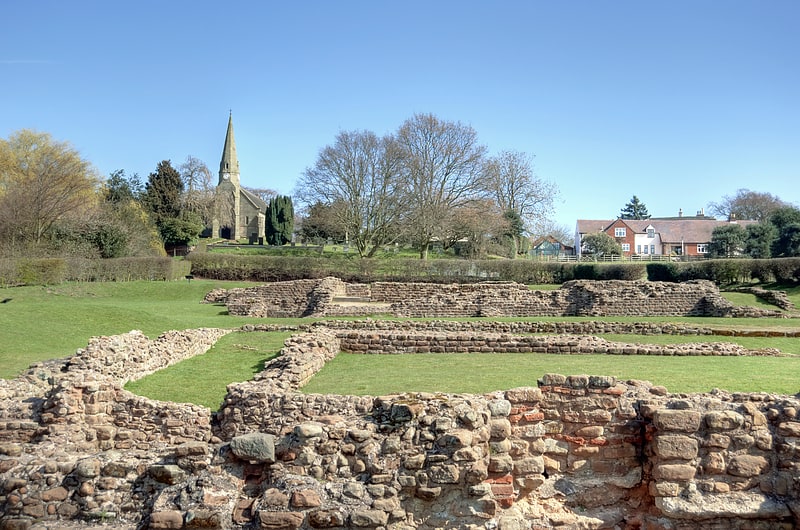
Museum with Roman inn and bathhouse ruins. Letocetum is the ancient remains of a Roman settlement. It was an important military staging post and posting station near the junction of Watling Street, the Roman military road to north Wales, and Icknield Street. The site is now within the parish of Wall, Staffordshire, England. It is owned and run by the National Trust, under the name Letocetum Roman Baths Site & Museum. The site is in the guardianship of English Heritage as Wall Roman Site.
The Romans came to Letocetum in 50 CE to establish a fortress during the early years of the invasion of Britain. The land could not support large numbers of soldiers and Letocetum, at an important cross-roads, became a large scale posting station. The settlement developed with successive bath houses and mansiones built to serve the official travellers as well as the growing civilian population. It is known mainly from detailed excavations in 1912–13, which concentrated on the sites of the mansio and bath-house, but there is evidence of a substantial settlement with possible basilica, temples, and amphitheatre.
The remains visible today are those of the stone bath house and mansio, built in approximately 130 CE after Letocetum ceased to have a military function and became a civilian settlement. The settlement reached its peak during the 2nd and 3rd centuries and at this time occupied 8.1–12 hectares (20–30 acres). At the end of the 3rd century, the town relocated within high defensive walls astride Watling Street. After the Romans left early in the 5th century the settlement went into decline. The modern village of Wall emerged in the land once occupied by Letocetum.[3]
Address: Watling St, WS14 0AW Lichfield
Armed Forces Memorial
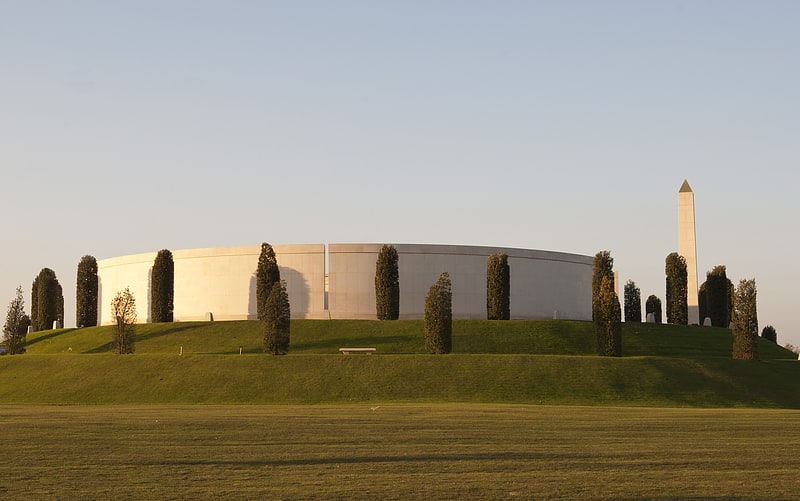
The Armed Forces Memorial is a national memorial in the United Kingdom, dedicated to the 16,000 servicemen and women of the British Armed Forces killed on duty or through terrorist action since after the Second World War. It is within the National Memorial Arboretum in Staffordshire.[4]
Erasmus Darwin House
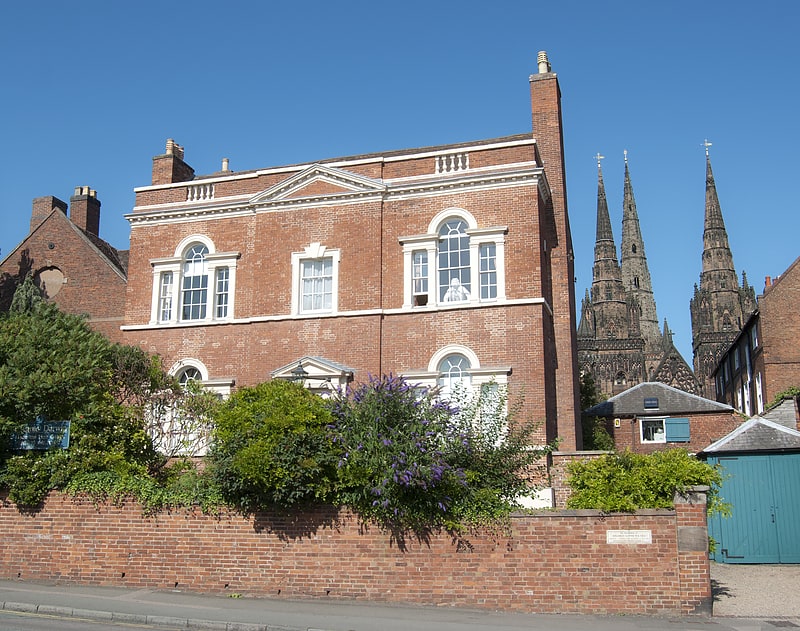
Museum in Lichfield, England. Erasmus Darwin House in Lichfield, Staffordshire is the former home of the English poet and physician Erasmus Darwin, grandfather of naturalist Charles Darwin. The house is a Grade I listed building, and is now a writer's house museum commemorating Erasmus Darwin's life.
Erasmus Darwin was a physician, scientist, inventor, poet, and educationalist, and lived on Beacon Street from 1758 until 1781. A founding member of the Lunar Society, it was here that he received many notable 18th-century personalities, including Josiah Wedgwood, Matthew Boulton, Benjamin Franklin and James Watt.[5]
Address: Lichfield, Beacon Street, Lichfield, Staffordshire, England
Beacon Park

Park in Lichfield, England. Beacon Park is a public park in the centre of the city of Lichfield, Staffordshire, in the United Kingdom. The park was created in 1859 when the Museum Gardens were laid out adjacent to the newly built Free Museum and Library. The park has since been extended in stages and now forms 69 acres of open parkland in the city centre. The park is in the northwest of the city centre and to the west of the Cathedral Close across the road from the Garden of Remembrance.
The majority of the park was originally waterlogged marshland and a lake covered the area of what is now the Museum Gardens. The land was drained in the early 19th century and the Museum Gardens were raised with silt dredged from Minster Pool. The large northern area of the park once formed the land and gardens of Beacon House. This land was incorporated into the park when the owner of Beacon House, Colonel Swinfen Broun, donated the land after his death.
The park has many sporting and recreational facilities for use by the public, including an 18-hole golf course, football pitches, tennis courts and bowling greens. The park also hosts a wide range of events throughout the year including the Lichfield Bower and The Lichfield Festival. The park is home to many monuments, most notably a large bronze statue of Captain Smith of the RMS Titanic.[6]
Church of St Chad
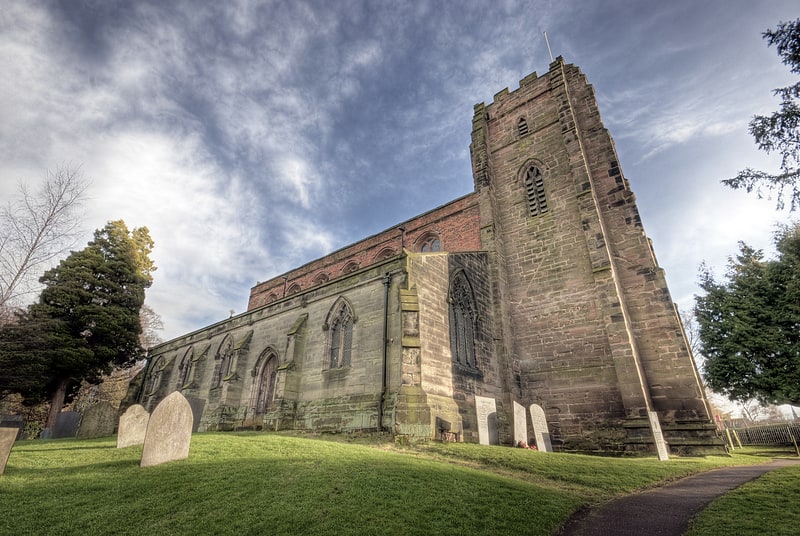
Church in Lichfield, England. The Church of St Chad is a parish church in the area of Stowe in the north of the city of Lichfield, Staffordshire, in the United Kingdom. It is a Grade II* Listed Building. The church is located to the north of Stowe Pool on St Chad's Road. The current building dates back to the 12th century although extensive restorations and additions have been made in the centuries since.[7]
Address: 42 St. Chads Rd, Lichfield
Stowe Pool
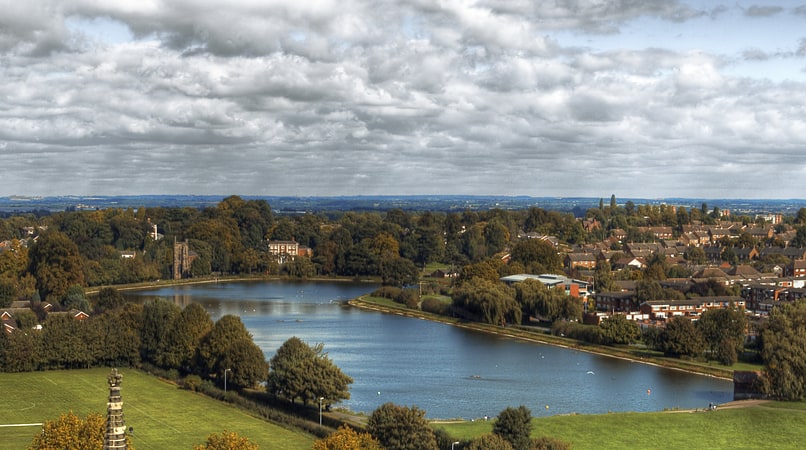
Reservoir in England. Stowe Pool is a reservoir located in the city of Lichfield, Staffordshire. Formerly a fishery, Stowe Pool was turned into a reservoir in 1856 by the South Staffordshire Waterworks Co. Before 1856, Stowe Pool existed as a mill pond, with Stowe mill located just to the west of St Chad’s Church. Since 1968 the reservoir has not been used for supply and is now a public amenity used for recreation purposes. Stowe Pool is a designated SSSI site as it is home to the native white-clawed crayfish.[8]
Minster Pool

Reservoir in England. Minster Pool is a reservoir located between Bird Street and Dam Street in the heart of the city of Lichfield, Staffordshire in the United Kingdom. The pool lies directly south of Lichfield Cathedral and historically has been important to the defence of the Cathedral Close. The pool was originally formed in the 11th century when a boggy stream was dammed at its eastern end to drive a mill on Dam Street. The pool was used as a mill pond and fishery until 1856 when the mill was demolished; it has since been retained for public amenity.[9]
Address: 21-23 Dam St, Lichfield
St Michael on Greenhill
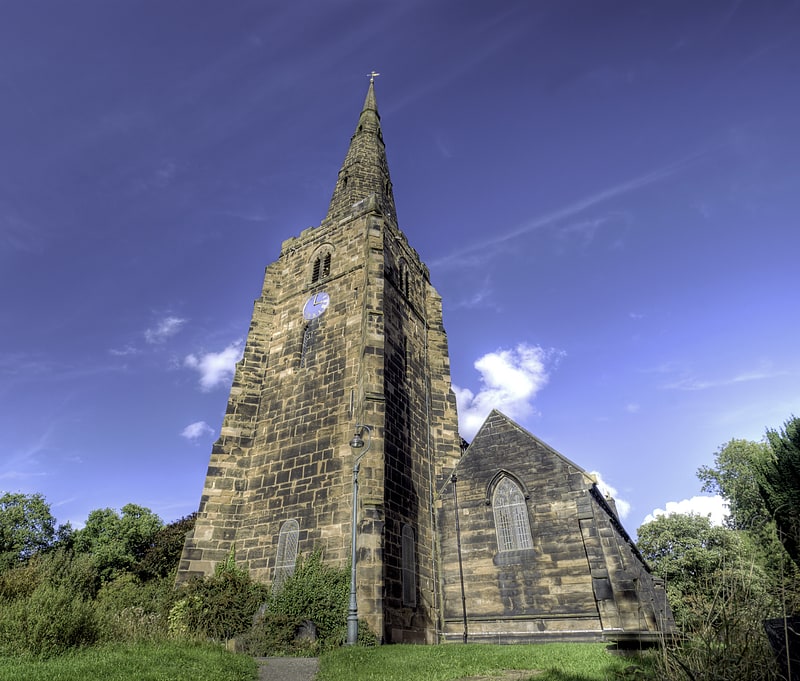
St Michael on Greenhill is a parish church in Lichfield, Staffordshire in the United Kingdom, located on the high ground of Greenhill in the east of the city. A church has been on the present site since at least 1190 but the current building dates mainly from the restoration of 1842–43. The churchyard is one of five ancient burial grounds in England and is one of the largest churchyards in the country at 9 acres.
The church is Grade II* listed; four of the monuments in the churchyard are separately listed Grade II.[10]
Lichfield Garrick
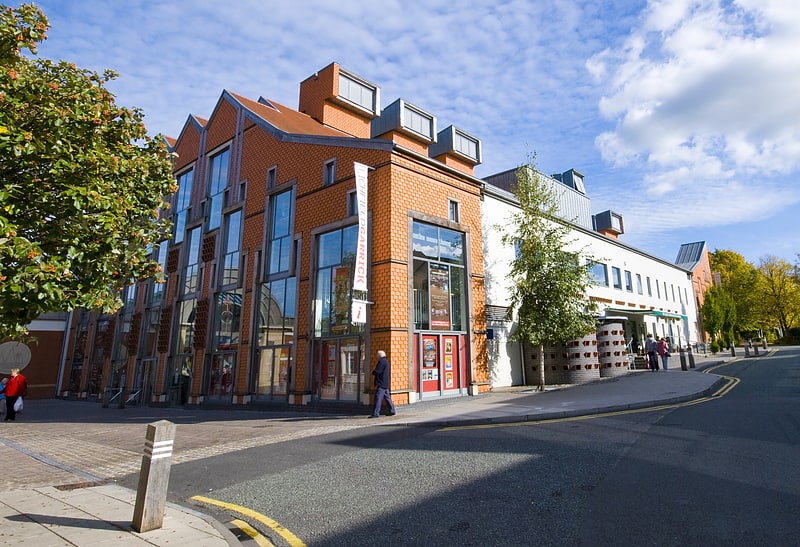
Theatre in Lichfield, England. The Lichfield Garrick is a modern, purpose built theatre in Lichfield, a city in Staffordshire, England.
The main auditorium seats 562 people and the Studio seats 157 people. The theatre is named after the 18th century actor David Garrick, who was brought up in Lichfield.
The Garrick's program includes a variety of touring shows as well as its own productions. It is also used for plays and musicals by local amateur companies. Like most British theatres the Garrick also plays host to an annual Christmas pantomime.
The Lichfield Garrick regularly produces and co-produces work, runs an Artist Development programme and a Community Engagement programme that engages with local schools and arts organisations throughout the year. The theatre also runs weekly programmes including The Garrick Community Choir, The Morning Chorus and The Garrick Youth Theatre.
The Lichfield Garrick is operated as a charitable theatre trust and is independent of Lichfield District Council, although the Council invests in the theatre as its principal partner.
The board of trustees is chaired by Mark Wright.
The theatre won the UK Theatre Award for the West Midlands Most Welcoming Theatre (2017) and the What's On Readers' Award for Staffordshire's Best Arts Venue (2018 - 2020).[11]
Address: Lichfield, Castle Dyke